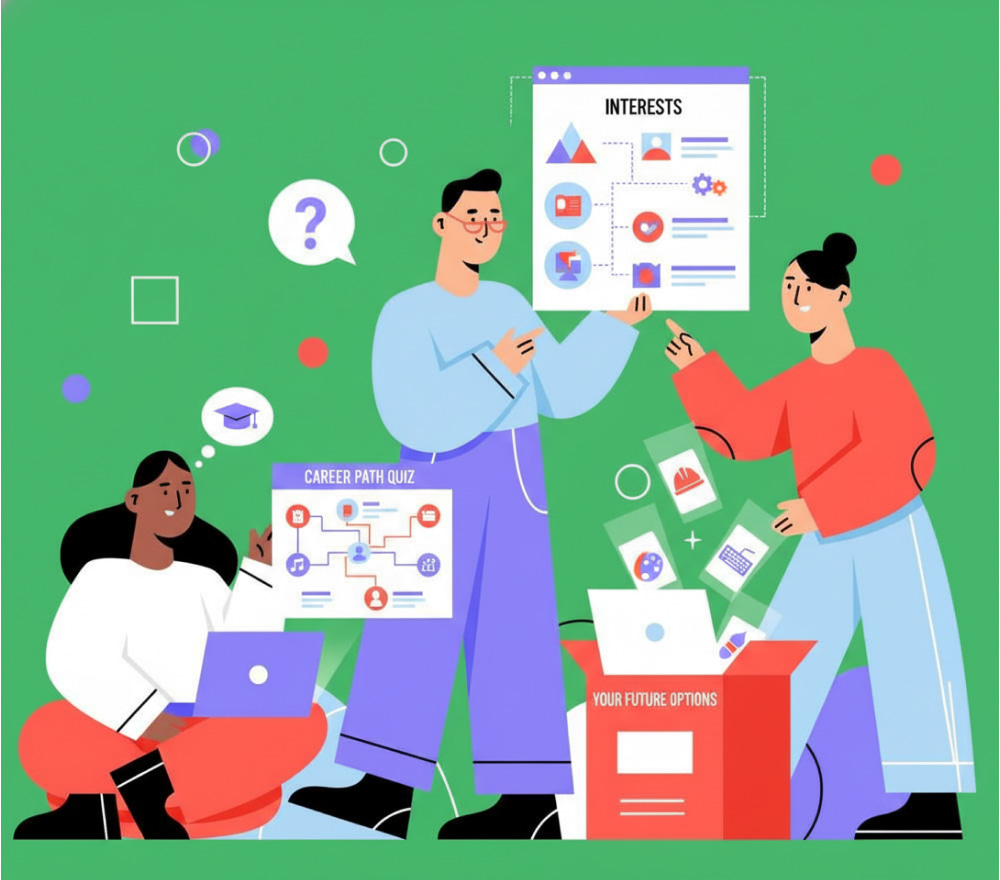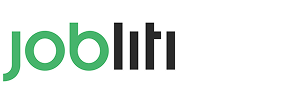Smart Guide to Choosing a Job That Truly Fits You

Take Quiz to Find the Right Career for You
Start the Test →Why Career Fit Matters More Than Ever
Work shapes identity, daily rhythms, and long-term well-being, so choosing a path deserves methodical attention. The market moves quickly, titles morph, and new skills appear overnight, which means guesswork rarely delivers a satisfying outcome. Instead of chasing trendy job titles, a strategic process grounded in self-knowledge and labor-market data keeps your effort purposeful and resilient.
One lever that accelerates clarity is a reliable hub that curates roles, frameworks, and next steps without overwhelming you. Beyond generic job boards, the guidance you need might come from a resource like find right job me, which centralizes role mapping, skill assessments, and curated vacancies for thoughtful exploration. With a single place to synthesize insights, you reduce noise and start recognizing authentic patterns in your interests and strengths.
Progress also hinges on focusing attention where it counts rather than endlessly browsing listings. With a focused approach, professionals can find perfect job trajectories that reflect both ambition and lifestyle boundaries, balancing compensation with flexibility and purpose. Over time, that combination compounds into engagement, momentum, and a reputation that opens doors you never knew existed.
Finally, sustainable decisions emerge from experiments, not just reflection. Informational interviews, portfolio prototypes, and short courses turn fuzzy curiosity into practical evidence, which keeps motivation high as you iterate. Small, low-risk trials build conviction and help you pivot before committing to a costly, ill-fitting direction.
A Self-Discovery Framework That Connects You to Real Opportunities
Before applications, build a clear picture of your values, strengths, constraints, and motivators. Rather than relying on instinct alone, quantify what matters and translate it into role requirements. This upfront effort spares you from detours and makes your search conversations sharper and more persuasive.
- Values: Identify non-negotiables such as autonomy, mentorship, mission, or stability.
- Strengths: Map durable skills, emerging capabilities, and transferrable experiences.
- Constraints: Note location, schedule, compensation floor, and visa or licensing details.
- Motivators: Track what energizes you building, analyzing, persuading, or teaching.
Once your profile is explicit, you can compare it to real job families instead of vague aspirations. By blending personality signals with role outcomes and salary ranges, candidates approximate a find your future job match outcome that feels both exciting and sustainable. The result is a targeted short list of roles that align with the reality of hiring demand.
Lightweight diagnostics can jump-start this clarity without heavy time investment. To spark hypotheses quickly, interactive tools such as a job finder quiz condense patterns from your responses into practical role ideas that you can pressure-test in the field. Treat these outputs as a starting hypothesis, then verify with conversations, job descriptions, and sample projects.
Tools and Methods to Validate Fit Before You Commit
Validation prevents sunk-cost mistakes and boosts confidence when you decide to move. Instead of relying on job titles alone, examine day-to-day tasks, pace, collaboration styles, and metrics for success. This deeper understanding ensures your choice supports your personality and goals, not just your resume.
Structured diagnostics complement qualitative research and keep bias in check. As part of your signal-gathering, a concise job finder test can highlight transferable strengths you might overlook during self-assessment. Combined with real-world experiments, those insights form a reliable decision mosaic.
| Method | Purpose | When to Use | Signal to Watch |
|---|---|---|---|
| Informational Interviews | Understand realities of roles and teams | Early scoping and shortlist validation | Energy after conversations and role clarity |
| Portfolio Prototypes | Demonstrate capability and test enjoyment | Mid-cycle when targeting specific roles | Flow state, feedback quality, iteration speed |
| Shadowing/Micro-Internships | Experience tasks with minimal risk | Before committing to a pivot or program | Fit with pace, tools, culture, and feedback |
| Market Data Review | Align skills with demand and salary | Throughout the search to stay current | Openings trend, compensation bands, growth |
Finally, translate findings into clear criteria so you can decline tempting but misaligned offers. After shortlisting, calibrate your search to find job that suits you preferences regarding culture, collaboration, compensation, and trajectory without second-guessing later. When your criteria are visible, networking becomes more productive because contacts can advocate with precision.
Action Plan: From Research to Offer Without Wasting Time
Momentum comes from thoughtful sequencing and consistent execution. Rather than scattershot applications, carve your path into repeatable weekly routines. Find Career Quizs, scorecards, and scheduled outreach compound into results faster than sporadic bursts of effort.
- Week 1–2: Clarify target roles, refine resume, and craft modular cover letters.
- Week 3–4: Launch outreach to peers, alumni, and hiring managers with specific asks.
- Week 5–6: Build or update a portfolio that mirrors target job postings and outcomes.
- Week 7–8: Rehearse interviews using role-specific stories and quantified impact.
- Ongoing: Track KPIs response rate, interviews booked, and referrals then iterate.
As your pipeline matures, tailor applications to emphasize measurable achievements tied to business outcomes. Through iterative campaigns, you position yourself to find your perfect job while avoiding tunnel vision and burnout. Measurable progress keeps motivation high and helps you negotiate from strength when offers arrive.
Fresh ideas often emerge when you diversify inputs and challenge assumptions. For inspiration between networking sprints, some candidates try a find your dream job quiz to surface adjacent roles or industries worth exploring next. New hypotheses keep you curious and prevent premature commitment to a narrow track.
Common Pitfalls and Expert Tips for a Smoother Search
Many searches stall because criteria stay fuzzy or too many roles clutter the shortlist. Another trap involves over-preparing privately while under-networking publicly, which limits serendipity and intel. A pragmatic cadence of outreach, learning, and testing helps you move faster than perfectionism ever will.
Playfulness can relieve pressure and unlock insight when analysis fatigue creeps in. When indecision lingers, a quick find job you quiz can disrupt stale assumptions and point you toward arenas where your strengths shine. Treat the output as a conversation starter with mentors rather than a verdict written in stone.
Signal quality matters more than volume, so focus on evidence over hunches. If you enjoy structured reflection, a concise find your job quiz provides a directional nudge you can validate through projects, market data, and hiring manager feedback. Cross-checking streams of evidence keeps you adaptable without losing focus.
- Set “no-go” rules to protect values and wellbeing during negotiations.
- Favor outcomes-driven bullets and portfolios over generic responsibilities.
- Track serendipitous leads and follow up within 48 hours to sustain momentum.
- Debrief every interview to extract lessons and sharpen your narrative.
FAQ: Your Questions Answered
How do I narrow my choices without missing hidden opportunities?
Start broad by mapping three to five role families that match your skills and values, then apply clear criteria for culture, pace, and growth. Use a scoring sheet so you can compare apples to apples across postings and conversations, refining the shortlist as evidence accumulates.
Are career quizzes actually useful for serious professionals?
They are most useful as hypothesis generators rather than definitive answers, especially early in a pivot or promotion search. Some platforms bundle a free find your perfect job quiz with a skills-gap snapshot, which you can verify through projects, market research, and targeted networking.
How long should I expect a career transition to take?
Timelines vary by seniority, market conditions, and the distance of your pivot, but three to six months is common for focused searches. Track weekly KPIs applications, conversations, interviews so you can adjust strategy quickly rather than waiting for lagging indicators.
What budget-friendly resources help if I’m rebuilding from scratch?
Leverage public job descriptions, open courses, professional communities, and alumni groups to accelerate learning and outreach. For budget-conscious seekers, look for a reputable job finder quiz free option that still explains how the results map to competencies, titles, and next steps you can implement immediately.
What if I’m multi-passionate and can’t pick one direction?
Run parallel micro-experiments over a four- to six-week window, then compare energy, traction, and feedback before committing. This approach keeps doors open while ensuring you gather enough data to choose a path that aligns with your best, marketable strengths.
